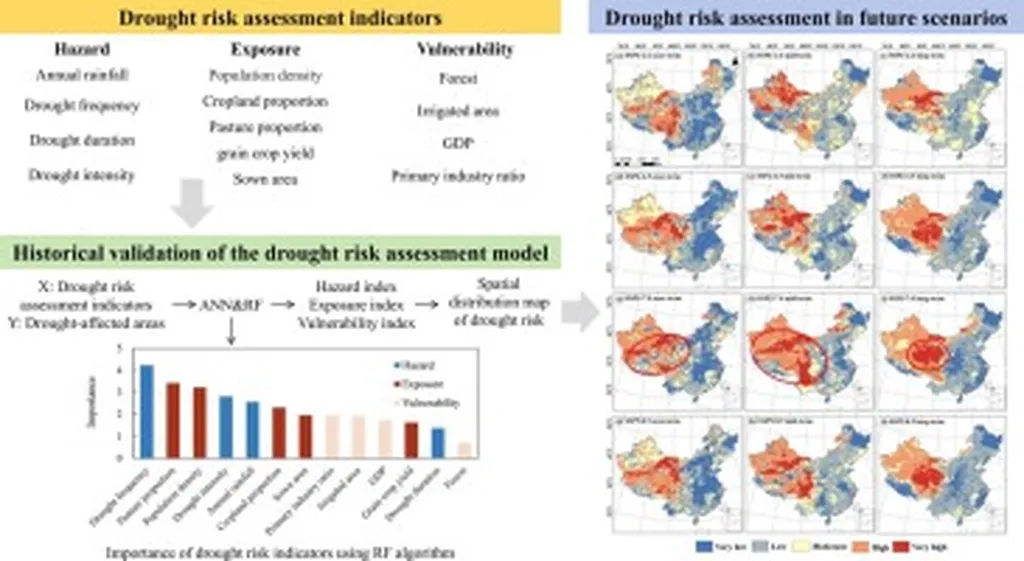In the heart of China’s Sanjiang Plain, a groundbreaking study is reshaping how we think about crop yield prediction under climate change. Led by Shehakk Muneer Baluch from the School of Water Conservancy and Civil Engineering at Northeast Agricultural University, this research integrates mechanistic crop modeling with machine learning to project drought-induced yield risks, offering a novel approach to climate-resilient agriculture.
The study, published in *Agricultural Water Management* (translated as “Water Management in Agriculture”), focuses on mid-century (2021–2060) conditions, using a Gaussian-process (GP) ensemble framework that combines simulated outputs from AquaCrop and DSSAT models with multi-source environmental covariates. This fusion leverages both process-based realism and data-driven flexibility, providing a more accurate and adaptable tool for yield prediction.
“By integrating these models, we’ve improved out-of-sample accuracy by 10–15% compared to using either model alone,” explains Baluch. This enhanced accuracy is crucial for farmers and agribusinesses, as it allows for more precise planning and risk management in the face of climate change.
The study applied this ensemble to maize, rice, soybean, and wheat under both rain-fed and irrigated regimes. The results were impressive, with performance metrics ranging from R² = 0.85–0.98 for DSSAT and R² = 0.52–0.78 for AquaCrop. To deconstruct prediction uncertainty, the researchers used SHapley Additive exPlanations (SHAP) to attribute variance to key factors such as irrigation depth, in-season rainfall, and multi-scale Standardized Precipitation Evapotranspiration Index (SPEI).
One of the most striking findings was that irrigation parameters accounted for over 60% of yield variability across all crops, substantially outweighing climate-stress factors. This highlights the critical role of water management in mitigating yield losses due to climate change.
“Our analysis reveals specific crop stages that are most vulnerable to water stress,” says Baluch. For maize, the tasseling to grain-filling stage is crucial, while for rice, it’s the panicle initiation to grain-filling stage. Soybean’s flowering to pod-filling and wheat’s jointing to grain-filling stages are also key periods for targeted water management.
Looking ahead to mid-century yields under different Shared Socio-Economic Pathways (SSPs), the study projects steep declines in rain-fed crops: maize (-42%), rice (-8%), soybean (-15%), and wheat (-12%). High-resolution maps of 30th- and 70th-percentile shortfall probabilities were generated, identifying central and eastern belts as urgent adaptation hotspots. Under the most severe scenario (SSP5–8.5), the median probability of ≥30% wheat loss reaches 80% in rain-fed fields.
While these projections are constrained by model settings, data quality, and future climate uncertainty, they provide a valuable blueprint for climate-resilient agriculture. The study’s innovative approach offers a transferable framework that can be applied to other regions, helping to shape future developments in the field.
As the world grapples with the impacts of climate change, this research underscores the importance of integrating advanced modeling techniques with practical water management strategies. By doing so, we can better prepare for the challenges ahead and ensure food security for future generations.
“This study is a significant step forward in our understanding of how to adapt to climate change,” Baluch concludes. “It provides a robust tool for farmers, policymakers, and agribusinesses to make informed decisions and implement effective strategies for sustainable agriculture.”

